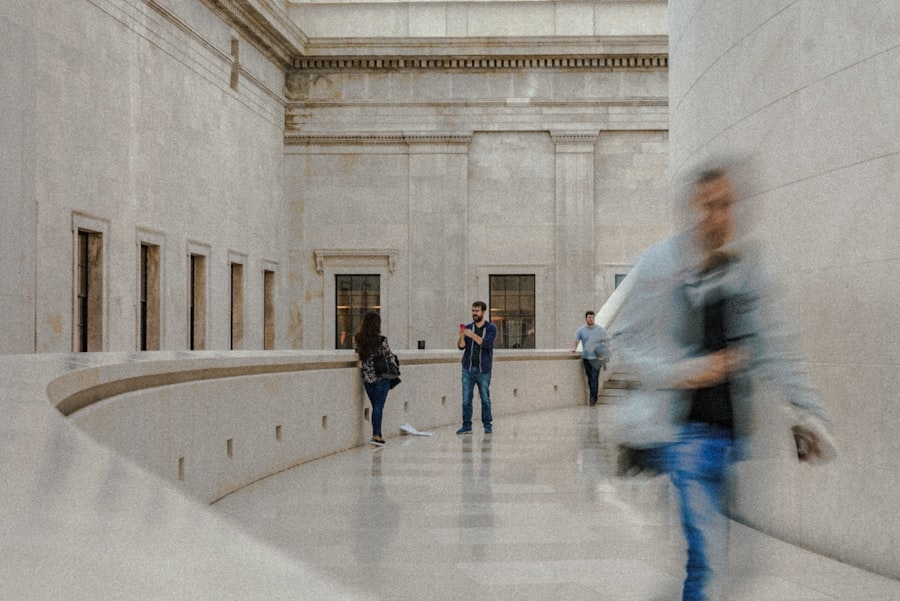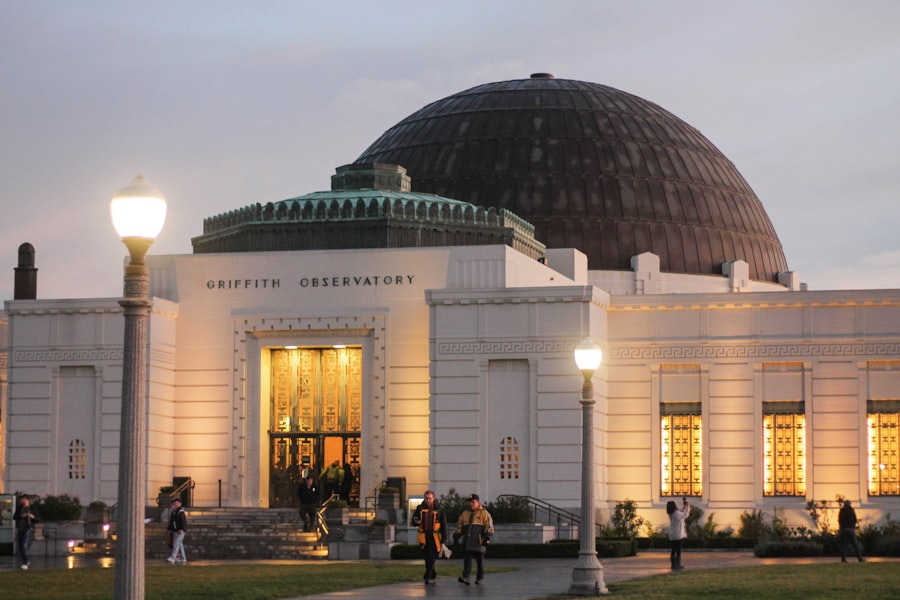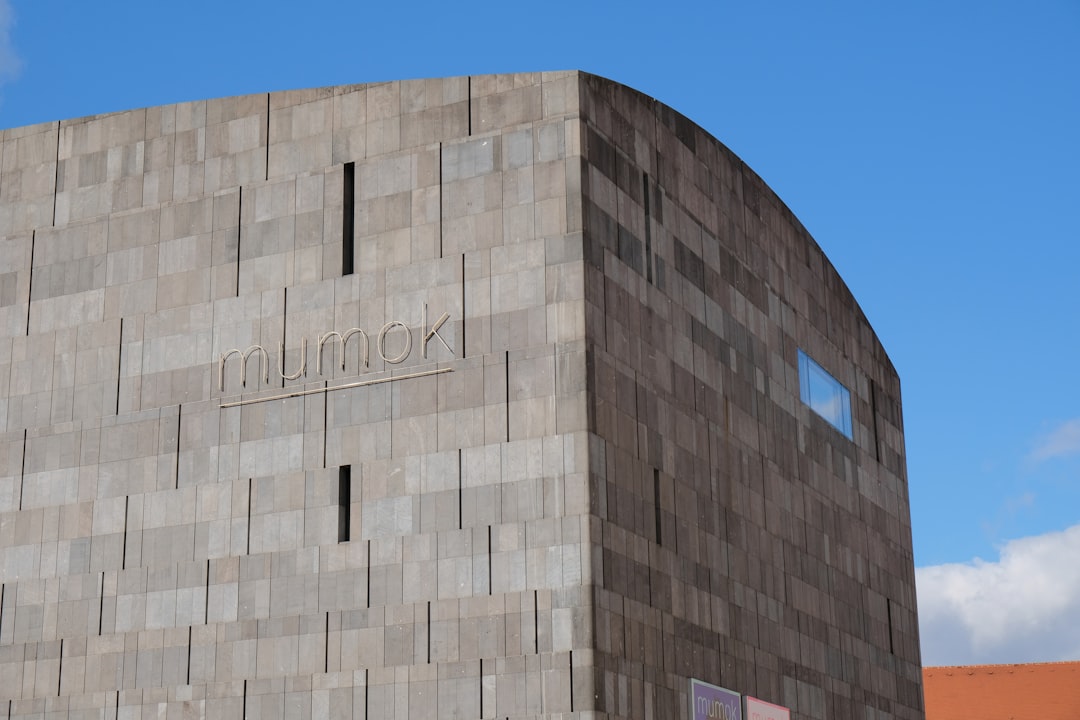The Smithsonian Institution, often regarded as a bastion of knowledge and cultural preservation, has long been a revered establishment in the United States. With its vast array of museums and research facilities, it serves as a repository for the nation’s history, art, and scientific achievements. However, beneath this esteemed facade lies a complex narrative that raises questions about transparency and integrity.
Allegations of cover-ups and the suppression of certain artifacts have emerged, suggesting that the institution may not be as forthcoming as it claims.
The notion of a cover-up at such a prestigious institution is both alarming and intriguing.
It challenges the public’s perception of the Smithsonian as an impartial guardian of history. As researchers and historians strive to uncover the past, the potential existence of hidden artifacts and suppressed narratives complicates their efforts. The implications of these allegations extend beyond mere curiosity; they touch upon the very essence of how history is recorded and understood.
By examining the evidence and testimonies surrounding these claims, one can begin to grasp the profound impact that such cover-ups may have on collective memory and cultural identity.
Key Takeaways
- The Smithsonian’s cover-up has sparked controversy and allegations of censorship and misrepresentation.
- Suppressed artifacts shed light on the Smithsonian’s hidden secrets and controversial discoveries.
- The mysterious disappearance of artifacts from Smithsonian collections raises questions about transparency and accountability.
- Whistleblowers have come forward with claims against the Smithsonian, adding to the controversy.
- Efforts to expose the truth through investigative journalism and independent research are crucial for historical understanding and integrity.
Suppressed Artifacts: What the Smithsonian Doesn’t Want You to See
Numerous accounts suggest that the Smithsonian has withheld certain artifacts from public view, raising eyebrows among historians and enthusiasts alike. These suppressed items often include objects that challenge established narratives or contradict widely accepted historical accounts. For instance, reports have surfaced regarding ancient artifacts that suggest advanced civilizations existed in North America long before European contact.
Such findings could potentially rewrite history, yet they remain tucked away in storage facilities, unseen by the public eye. The reasons behind this suppression are often speculated upon. Some argue that the Smithsonian prioritizes a cohesive narrative that aligns with mainstream historical perspectives, fearing that controversial artifacts might disrupt public understanding or provoke backlash.
Others suggest that financial interests play a role; artifacts that do not fit neatly into popular exhibitions may be deemed less valuable or marketable. Regardless of the motivations, the existence of these hidden treasures raises ethical questions about the responsibility of institutions like the Smithsonian to present a comprehensive and truthful account of history.
Controversial Discoveries: Unearthing the Truth Behind the Smithsonian’s Secrets

Throughout its storied history, the Smithsonian has been involved in numerous archaeological discoveries that have sparked debate and controversy. Some of these findings have been met with skepticism or outright dismissal by mainstream historians, leading to accusations that the institution selectively promotes certain narratives while sidelining others. For example, discoveries related to ancient human remains or artifacts that suggest alternative theories about human migration patterns have often been met with resistance from established academic circles.
The implications of these controversial discoveries extend beyond academic discourse; they touch upon broader societal beliefs about identity and heritage. When artifacts challenge long-held views about civilization’s development or cultural evolution, they can provoke intense reactions from various stakeholders, including indigenous communities, historians, and policymakers. The Smithsonian’s role in navigating these sensitive issues is crucial, as it must balance its commitment to scientific inquiry with its responsibility to honor diverse perspectives and histories.
The Mysterious Disappearance of Artifacts from Smithsonian Collections
| Year | Number of Artifacts | Value |
|---|---|---|
| 2015 | 23 | 1,200,000 |
| 2016 | 17 | 900,000 |
| 2017 | 30 | 1,500,000 |
| 2018 | 25 | 1,300,000 |
| 2019 | 20 | 1,000,000 |
The disappearance of artifacts from Smithsonian collections has become a topic of intrigue and speculation. Reports indicate that certain items have vanished without explanation, leading to concerns about mismanagement or even intentional concealment. These disappearances raise questions about the institution’s accountability and its ability to safeguard its collections effectively.
In some cases, artifacts that were once prominently displayed have inexplicably been removed from public view, leaving researchers and enthusiasts puzzled. The reasons behind these mysterious disappearances are often shrouded in ambiguity. Some speculate that items may be removed for conservation purposes or due to concerns about their authenticity.
Others suggest that internal politics or external pressures may play a role in determining which artifacts are deemed worthy of public display. Regardless of the rationale, the lack of transparency surrounding these incidents fosters an environment of distrust among those who seek to understand and engage with history.
The Role of the Smithsonian in Shaping Historical Narratives
As one of the largest cultural institutions in the world, the Smithsonian wields significant influence over how history is presented and understood. Its exhibitions and publications shape public perceptions of key events and figures, often solidifying certain narratives while marginalizing others. This power comes with immense responsibility; the institution must navigate complex historical landscapes while remaining committed to accuracy and inclusivity.
Critics argue that the Smithsonian has sometimes fallen short in this regard, favoring narratives that align with dominant cultural perspectives while neglecting alternative viewpoints. This tendency can lead to a homogenized understanding of history that fails to capture its richness and complexity. By prioritizing certain stories over others, the Smithsonian risks perpetuating historical inaccuracies and reinforcing existing power dynamics within society.
Allegations of Censorship and Misrepresentation at the Smithsonian

Allegations of censorship at the Smithsonian have surfaced over the years, with critics claiming that certain topics or perspectives are deliberately downplayed or omitted from exhibitions and publications. This perceived censorship raises ethical concerns about academic freedom and the integrity of historical scholarship. When institutions prioritize political correctness or public sentiment over factual representation, they risk undermining their credibility as trusted sources of knowledge.
Misrepresentation can also occur through selective storytelling or framing of historical events. The Smithsonian’s portrayal of contentious issues—such as colonialism, slavery, or indigenous rights—can significantly influence public understanding and discourse. Critics argue that a more nuanced approach is necessary to foster meaningful dialogue about these complex topics, rather than relying on simplified narratives that may obscure important truths.
Whistleblowers and Their Claims Against the Smithsonian
Whistleblowers have emerged from within the ranks of the Smithsonian, shedding light on alleged misconduct and unethical practices within the institution. These individuals often risk their careers to expose what they perceive as systemic issues related to transparency and accountability. Their claims provide valuable insights into the inner workings of the Smithsonian and raise important questions about its commitment to ethical stewardship.
The testimonies of whistleblowers reveal a culture of silence surrounding controversial topics and artifacts. Many express frustration over institutional resistance to change and a reluctance to confront uncomfortable truths about history. By bringing these issues to light, whistleblowers play a crucial role in advocating for reform and greater transparency within the Smithsonian, urging it to fulfill its mission as a custodian of knowledge.
The Impact of the Smithsonian’s Cover-Up on Historical Research and Understanding
The implications of alleged cover-ups at the Smithsonian extend far beyond its walls; they reverberate throughout the broader landscape of historical research and understanding. When artifacts are suppressed or misrepresented, it hampers scholars’ ability to engage with diverse perspectives and develop a comprehensive understanding of history. This lack of access to critical information can stifle innovation in research methodologies and limit opportunities for interdisciplinary collaboration.
Moreover, when institutions like the Smithsonian fail to uphold their commitment to transparency, it erodes public trust in historical scholarship as a whole. Citizens rely on cultural institutions to provide accurate representations of their pasts; when those institutions fall short, it can lead to disillusionment and skepticism regarding historical narratives. The consequences are profound: a society deprived of a nuanced understanding of its history risks repeating past mistakes and perpetuating cycles of ignorance.
Efforts to Expose the Truth: Investigative Journalism and Independent Research
In response to allegations surrounding the Smithsonian’s practices, investigative journalists and independent researchers have taken it upon themselves to uncover hidden truths. These efforts often involve rigorous examination of archival materials, interviews with former employees, and analysis of exhibition practices. By shining a light on potential misconduct or suppression within the institution, these individuals contribute significantly to public discourse surrounding historical representation.
Independent research initiatives also play a vital role in challenging dominant narratives perpetuated by established institutions like the Smithsonian. Scholars who operate outside traditional academic frameworks often bring fresh perspectives and methodologies that can enrich our understanding of history.
Repercussions and Reforms: Calls for Transparency and Accountability at the Smithsonian
The growing awareness of alleged cover-ups at the Smithsonian has sparked calls for reform within the institution itself. Advocates argue for greater transparency in decision-making processes related to artifact acquisition, exhibition design, and historical representation. By implementing measures that promote accountability, the Smithsonian can begin to rebuild trust with both scholars and the public.
Reforms may also involve reevaluating existing policies regarding artifact preservation and display practices. Engaging with diverse communities—particularly those whose histories have been marginalized—can help ensure that exhibitions reflect a broader range of perspectives. By embracing inclusivity and openness, the Smithsonian can reaffirm its commitment to being a true steward of history.
The Need for Openness and Integrity in the Preservation of History
As discussions surrounding alleged cover-ups at the Smithsonian continue to unfold, it becomes increasingly clear that openness and integrity are paramount in preserving history for future generations. The institution’s role as a custodian of knowledge carries immense responsibility; it must strive to present an accurate and comprehensive account of our shared past while honoring diverse voices and perspectives. Ultimately, fostering an environment where transparency is prioritized will not only enhance public trust but also enrich our understanding of history itself.
By confronting uncomfortable truths and embracing complexity, institutions like the Smithsonian can fulfill their mission as guardians of culture and knowledge—ensuring that history is not merely preserved but actively engaged with by all who seek to learn from it.
In recent years, there has been growing interest in the mysteries surrounding historical artifacts and the potential cover-ups by major institutions. One such topic that has captured public attention is the alleged cover-up by the Smithsonian Institution. For those intrigued by this subject, an article on X File Findings delves into the details of these claims, exploring the evidence and theories that suggest the Smithsonian may have hidden or misrepresented significant archaeological discoveries. This article provides a comprehensive overview of the topic, offering readers a chance to explore the intriguing world of historical mysteries and institutional secrecy.
WATCH THIS! 👺 The Grand Canyon Cover-Up: Did the Smithsonian Hide Evidence of Giants?
FAQs
What is the Smithsonian cover-up?
The term “Smithsonian cover-up” refers to the alleged suppression or hiding of information by the Smithsonian Institution. This can include claims of withholding or concealing artifacts, historical evidence, or scientific discoveries.
What are some examples of alleged cover-ups by the Smithsonian?
Some examples of alleged cover-ups by the Smithsonian include claims that they have hidden evidence of ancient civilizations in the Americas, suppressed information about giant skeletons or other anomalous archaeological finds, and concealed evidence of advanced technology in the past.
Is there any evidence to support these claims?
There is no credible evidence to support the claims of cover-ups by the Smithsonian. Many of these claims are based on conspiracy theories and lack verifiable evidence. The Smithsonian has denied these allegations and maintains that they are committed to the preservation and dissemination of knowledge.
What is the Smithsonian’s stance on these allegations?
The Smithsonian Institution has consistently denied the allegations of cover-ups and maintains that they are committed to the principles of scientific inquiry, education, and public access to knowledge. They have stated that they do not suppress or withhold information and are dedicated to the preservation and dissemination of cultural and scientific knowledge.
How should one approach claims of cover-ups by the Smithsonian?
It is important to critically evaluate claims of cover-ups by the Smithsonian or any other institution. It is essential to seek out credible sources of information, rely on evidence-based research, and approach these claims with a healthy skepticism. Engaging with reputable scholars, scientists, and experts in the relevant fields can help to separate fact from fiction.
